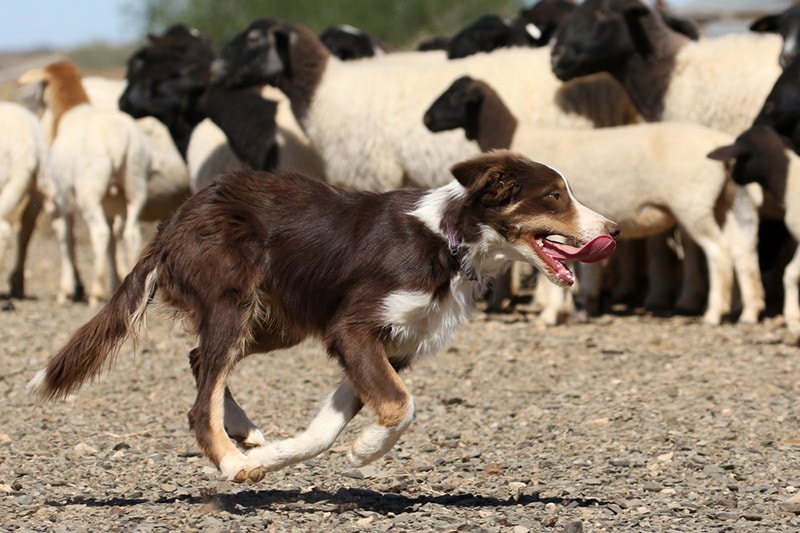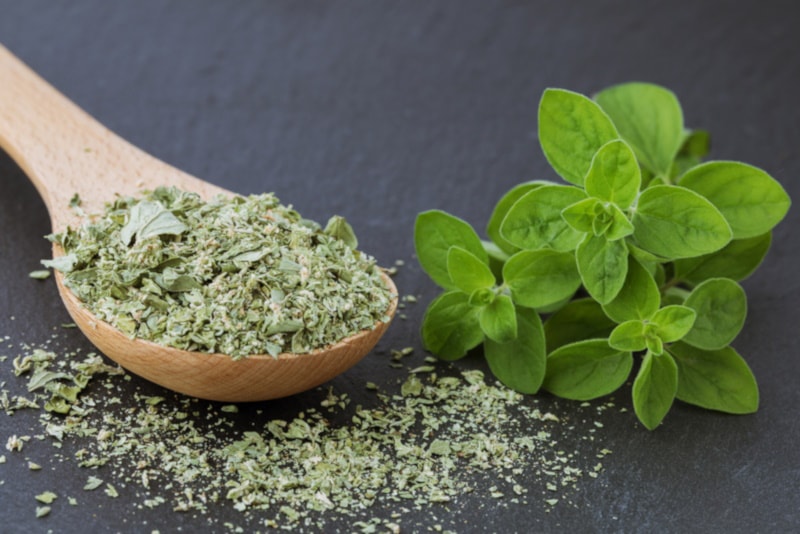How to Clean Labradoodle Ears: 5 Expert Tips
By Kit Copson
Updated on
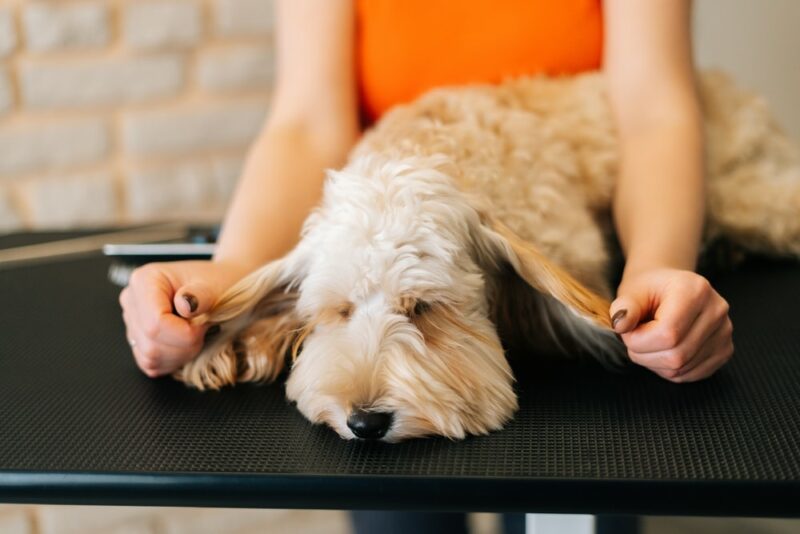
When we think of grooming, we often think of brushing, bathing, and a nail trim every few weeks. An important but sometimes overlooked aspect of grooming your dog at home is ear cleaning. All dogs should have their ears checked regularly and cleaned if necessary, but some may need more frequent cleaning than others.
Labradoodles, for example, have long, floppy ears that tend to retain and trap moisture, which is one of the most common causes of ear infections. Dirt, debris, and foreign bodies can also get into the ears, which may lead to an infection.
If you’re new to ear cleaning and aren’t sure how to approach it, we’ll explain, step-by-step, how to clean your Labradoodle’s ears safely with a few simple supplies.
The 5 Tips to Clean a Labradoodles Ears
1. Check the Ears
The first thing you’ll want to do is take a look inside your Labradoodle’s ears to ascertain whether or not they really need to be cleaned. Your dog’s ears are self-cleaning, so they only need to be cleaned by you if absolutely necessary. The circumstances in which you might want to clean the ears yourself are:
- You’ve just bathed your Labradoodle
- Your Labradoodle has been for a swim
- You see a clear buildup of dirt
- Your vet has asked you to do so
If you spot signs of an ear infection (more on this further down), don’t clean the ears yourself. See your vet to determine the right course of treatment.
2. Gather Supplies
The supply list for ear cleaning is pretty basic. The most important thing is that you’re using a vet-approved solution, not a solution for humans or a homemade solution, like those made of hydrogen peroxide or vinegar. You should also avoid using Q-tips, as these can worsen the problem. Here’s what you’ll need:
- A vet-approved ear-cleaning solution
- A towel
- Cotton balls or gauze
- Gloves
- Treats
- A human assistant for nervous dogs
3. Using the Solution
This part can be quite intimidating for first-timers, especially if you’ve got a reluctant Labradoodle. In this case, you might want to recruit a human assistant to help keep the Labradoodle calm and prevent them from moving around too much. Treats can be useful for “setting the tone”, if you will, and for rewarding your Labradoodle to create positive associations.
Ask your Labradoodle to sit and reward them for doing so. Put on your gloves and calmly squeeze the solution into your Labradoodle’s ear to the point where the ear is almost full. Then, put your fingers on the base of the ear and use a massaging motion to get the ear solution working to dislodge dirt and debris. You’ll likely hear a “squishy” sound as you massage.
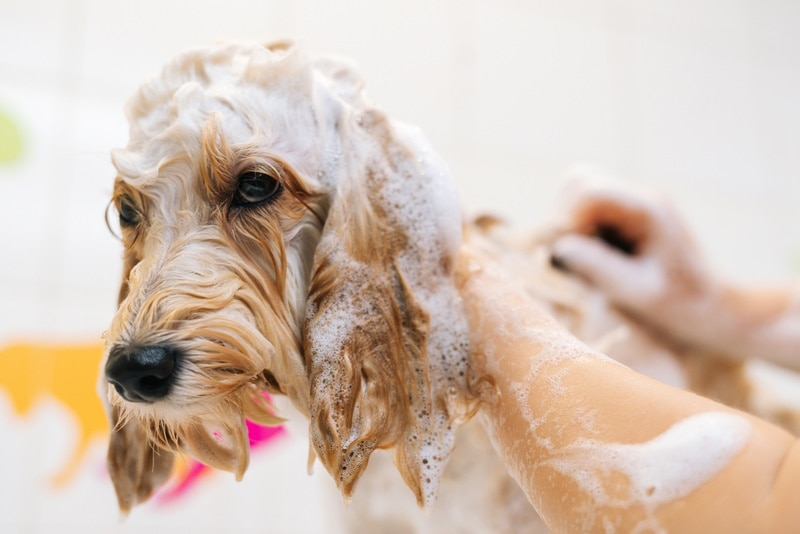
4. Let Your Labradoodle Shake It Out
Once you’ve massaged the ear base, take the towel and place it above (but not touching) your Labradoodle’s head, the sides hanging down near the ears to create a sort of barrier between you and the splashy mess coming your way.
Let your Labradoodle shake their head to move the dirt closer to the outer ear. This makes it easier to clean with a cotton ball or gauze. Offer a treat to reward your Labradoodle for getting this far.
5. Wipe the Dirt Away
Take the cotton ball or gauze and gently wipe inside the ear to remove the dirt the solution has brought out, taking care not to go too deep. You might need to do this several times depending on how much dirt there is, so be ready with a bunch of cotton balls, just in case. Finish off with a treat and lots of praise.

FAQ on Cleaning Your Labradoodle Ears
How Often Should I Clean My Labradoodle’s Ears?
Only as often as is necessary, like when you can see that your dog’s ears are dirty, or your vet has advised you to do so. Dogs with long, floppy ears (like the Labradoodle) might need to be cleaned more regularly because these kinds of ears are especially vulnerable to trapped dirt, debris, and moisture, but, if the ears are clean, it’s best to leave them alone.
What Causes Ear Infections in Dogs?
When dirt, debris, or too much moisture gets trapped in the ear (especially common in dogs that swim often), this can cause an ear infection to develop.
- Foreign bodies like grassseeds
- Food and environmental allergies
- Autoimmune diseases (i.e. lupus)
- Endocrine conditions (i.e. hypothyroidism)
- Cancer
- Ear injury
- Polyps
- Ear mites
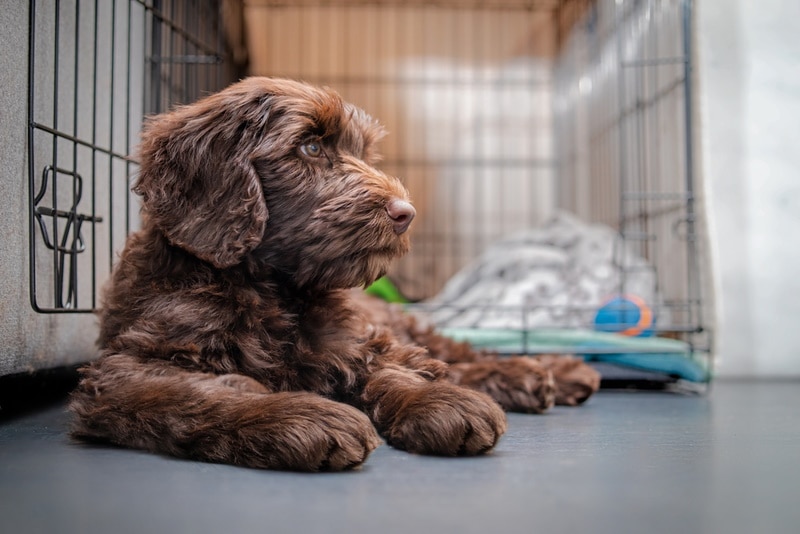
What Are the Signs of an Ear Infection?
If you suspect that your Labradoodle has an infection, they should be seen by a vet. Don’t try to clean the ears yourself unless your vet asks you to, as your Labradoodle may need another form of treatment.
- An unpleasant smell emanating from the ear
- Your Labradoodle is reluctant to be touched on or around the ears
- Redness
- Inflammation
- Itchiness
- Crustiness
- Hot ears
- Yellow or brownish discharge
- Scratching at the ears frequently
- Head tilting
- Head shaking
- Problems with balance (less common)
- Hearing loss (less common)
- Appetite changes (rare)
Will My Labradoodle’s Ear Infection Go Away Without Treatment?
It’s highly unlikely that your Labradoodle’s ear infection will clear up on its own—it needs to be treated. Any dog experiencing signs of an ear infection should receive veterinary attention.
Do Groomers Clean Ears?
It’s best to call ahead and make sure, but yes—professional groomers typically offer ear cleaning. If you’re not comfortable cleaning your Labradoodle’s ears yourself, you might want to consider letting a pro take the reins.
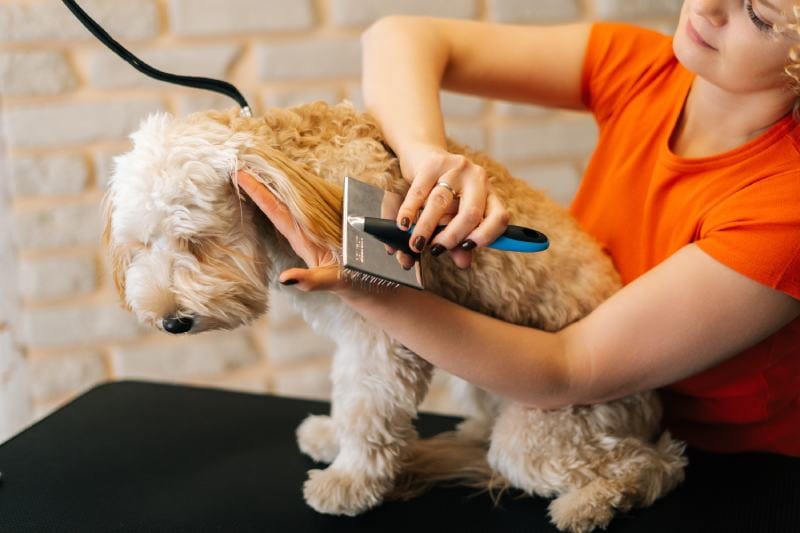
Conclusion
If possible, it’s best to start forming positive associations around the ear-cleaning process from when your Labradoodle is young. Each time the ears need to be cleaned, praise your Labradoodle and have a pack of their favorite treats at the ready to offer between each stage of the cleaning.
Forming positive associations with the procedure will reduce your Labradoodle’s stress and make it easier for you in the long run. It’s also key to remain as calm and act as normally as possible while cleaning the ears, as you don’t want your Labradoodle to pick up on your stress. Good luck!
Featured Image Credit: Dikushin Dmitry, Shutterstock



